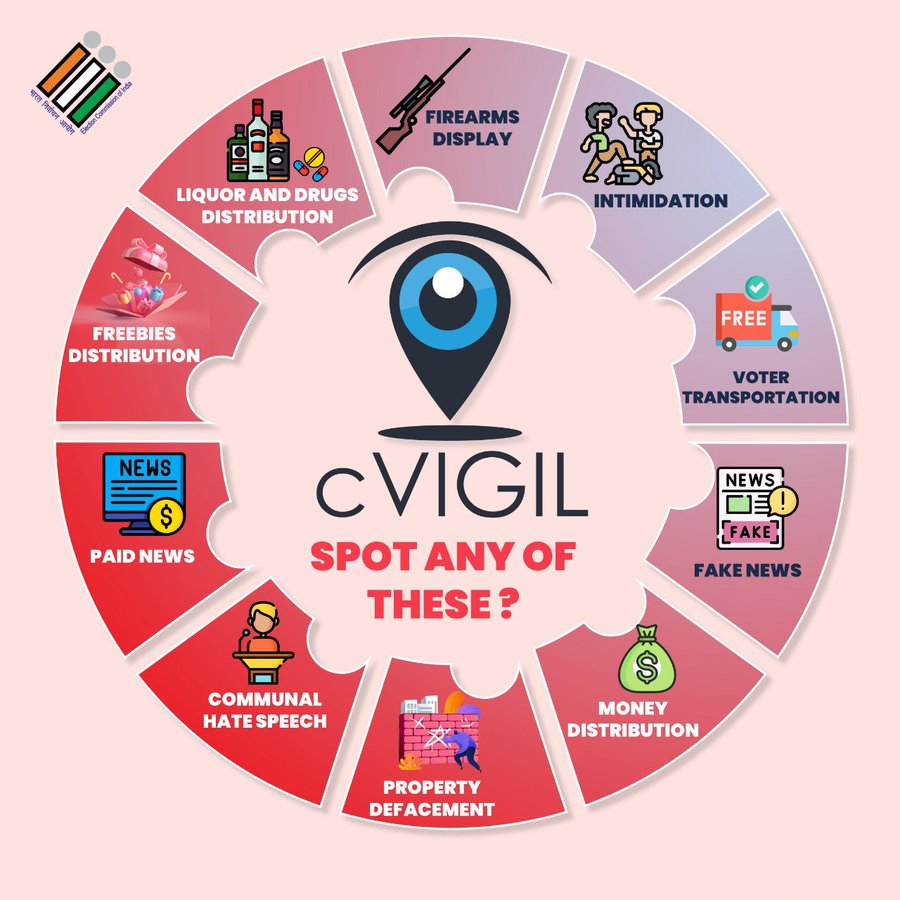Economy
India’s First Small-Scale LNG Unit in Madhya Pradesh
For Prelims: First Small-scale Liquefied Natural Gas Unit in India, Composition of Natural Gas, LNG And CNG, BioCNG, Major Applications of LNG.
For Mains: Challenges Related to LNG, Need for Small-Scale LNG.
Why in News?
The Union Minister for Petroleum and Natural Gas recently inaugurated India’s first small-scale liquefied natural gas (SSLNG) unit at GAIL (India) Ltd’s Vijaipur complex in Madhya Pradesh.
- This development is part of the government's broader initiative to promote the use of natural gas in various sectors and increase its share in the country's primary energy mix to 15% by 2030.
What is LNG and SSLNG?
- About: Liquefied natural gas (LNG) is natural gas that has been cooled to a liquid state, about -260°F (-162°C), to make it easier and safer to store and transport.
- Natural gas is a cleaner and more economical alternative to conventional hydrocarbons like coal and oil, making it crucial in India's transition towards greener energy sources.
- The primary component of natural gas is methane, comprising 70-90% of its composition.
- According to the IEA, Natural gas accounts for about a quarter of global electricity generation.
- Presently in India the share of natural gas in the energy basket is 6.7%.
- The top natural gas producing countries are the United States, Russia and Iran.
- Natural gas is a cleaner and more economical alternative to conventional hydrocarbons like coal and oil, making it crucial in India's transition towards greener energy sources.
- Small-Scale LNG: SSLNG involves liquefying and transporting natural gas on a smaller scale, catering to areas without pipeline connections using specialised trucks and vessels.
- Starting from large-scale LNG import terminals, SSLNG can supply LNG directly to consumers via cryogenic road tankers or small vessels, either as a liquid or regasified for traditional uses.
- It will lead to reduced dependency on costly gas imports, especially if it replaces a significant portion of diesel consumption, leading to substantial foreign exchange savings.
- It also promotes cleaner energy and supports India's transition towards sustainable fuel sources.
- Major Applications:
- Transportation:
- Marine Fuel: LNG is increasingly used as a fuel for ships and vessels, especially in emission-controlled areas, due to its lower emissions of sulphur oxides (SOx) and particulate matter compared to traditional marine fuels.
- Road Transport: LNG is used as a fuel for trucks, buses, and other heavy-duty vehicles, offering reduced emissions of nitrogen oxides (NOx), particulate matter, and greenhouse gases compared to diesel.
- Industrial Applications:
- Power Generation: LNG is used in gas-fired power plants to generate electricity, providing a cleaner alternative to coal or oil-fired power plants with lower emissions of pollutants.
- Heating and Cooling: LNG can be used in industrial processes for heating and cooling applications, such as in manufacturing, food processing, and refrigeration.
- Energy Storage and Backup:
- Renewable Energy Integration: LNG can complement renewable energy sources like wind and solar by providing backup power when renewable generation is intermittent or unavailable.
- Transportation:
- Related Challenges:
- High Costs: Building LNG liquefaction and regasification facilities is expensive. Additionally, the transportation process itself requires specialised cryogenic (super cold) carriers, further adding to the cost.
- Countries like China have successfully integrated LNG in commercial vehicles, but India faces challenges such as limited availability of LNG vehicles, higher initial costs, and a lack of financing and retail networks for LNG.
- Environmental Impacts: While cleaner than coal, LNG production and transportation still have some environmental impact, such as methane emissions.
- Methane is the second-most abundant GHG after CO2. Although methane dissipates faster than CO2 in the atmosphere, it has a much stronger planetary warming effect.
- Safety Concerns: LPG is highly flammable and can pose significant safety risks if not handled properly. Improper storage, handling, or use can lead to leaks, fires, or explosions.
- High Costs: Building LNG liquefaction and regasification facilities is expensive. Additionally, the transportation process itself requires specialised cryogenic (super cold) carriers, further adding to the cost.
What is Compressed Natural Gas?
- About: CNG is natural gas that has been compressed under high pressure, allowing it to occupy a smaller volume in fuel tanks.
- It is usually compressed at pressures ranging from 200 to 250 kg/cm², reducing its volume to less than 1% of its size at atmospheric pressure.
- Unlike LPG, which is a mixture of compressed propane and butane, CNG primarily consists of 80 to 90% methane in a gaseous state.
- The distinction between CNG and LNG lies in their physical states: CNG exists as a gas, whereas LNG exists as a liquid which is then regasified for usage.
- It is usually compressed at pressures ranging from 200 to 250 kg/cm², reducing its volume to less than 1% of its size at atmospheric pressure.
- Advantages of CNG:
- Lighter than air, disperses quickly in case of leaks.
- Clean burning with minimal residue, reducing engine maintenance.
- Lower greenhouse gas emissions compared to petrol or diesel.
- High safety due to its high auto-ignition temperature.
- Cost-effective compared to petrol and diesel, with a higher calorific value.
- Disadvantages of CNG:
- Requires large fuel tanks.
- Limited range per fill-up.
- Fewer filling stations available.
- Retrofitting older vehicles for CNG is challenging.
- BioCNG: BioCNG, also known as biomethane, is a renewable, clean-burning transportation fuel made from organic waste. It's produced by upgrading biogas to natural gas quality.
Way Forward
- LNG Infrastructure Development: Investing in expanding LNG import terminals and regasification facilities to increase LNG availability.
- Also, building a robust SSLNG infrastructure, including specialised trucks, vessels, and storage facilities, to reach areas without pipeline connections.
- Market Development: Creating awareness and promoting the benefits of LNG and SSLNG among industries, commercial users, and the transportation sector.
- Encouraging investment in LNG-powered vehicles and equipment, offering incentives and financing options for adoption.
- Regulatory Support: Developing clear regulatory frameworks and standards for LNG and SSLNG operations, ensuring safety, environmental compliance, and quality control.
- Investing for Innovation: Invest in R&D of advanced LNG technologies, such as cryogenic storage and transport solutions, to improve efficiency and reduce costs.
- Push for International Collaboration: At COP28, the United Nations Framework Convention on Climate Change mentioned “transitional fuels” for energy security in its outcome of the First Global Stocktake, alluding to natural gas.
- Participating in regional and global initiatives for LNG trade, infrastructure development, and policy harmonisation can strengthen India's position in the global LNG market.
UPSC Civil Services Examination Previous Year Questions (PYQs)
Mains
Q. The question of India’s Energy Security constitutes the most important part of India’s economic progress. Analyse India’s energy policy cooperation with West Asian countries. (2017)
Q. “Access to affordable, reliable, sustainable and modern energy is the sine qua non to achieve Sustainable Development Goals (SDGs)”.Comment on the progress made in India in this regard. (2018)


Rapid Fire
Ketamine
In a recent interview, Elon Musk revealed he uses a prescription for ketamine to manage what he described as a "negative chemical state" similar to depression.
- Ketamine is a medication primarily used for inducing anaesthesia and sedation in medical settings.
- It belongs to a class of drugs called dissociative anaesthetics, which means it can cause a person to feel detached from reality and experience a sense of disconnection from their surroundings.
- While ketamine shows promise in treating depression, especially treatment-resistant cases, it is not a cure. It is typically used in conjunction with other therapies.
- Misuse of ketamine can lead to harmful effects such as hallucinations, confusion, dissociation, and in high doses, it can cause serious health complications or be life-threatening.
Read more: Ketamine Drug


Biodiversity & Environment
Energy Efficiency in Construction Sector
For Prelims: India Cooling Action Plan, Eco-Niwas Samhita, Bureau of Energy Efficiency (BEE), Energy Conservation Building Code, Energy Conservation (Amendment) Act 2022
For Mains: Energy Efficiency in Construction Sector, Conservation, Government Policies & Interventions
Why in News?
India's unprecedented construction sector boom has brought forth economic opportunities and improved living standards, but it also poses significant environmental challenges. Addressing energy inefficiency in residential buildings becomes crucial amidst this scenario.
Why is Addressing Energy Inefficiency in India's Construction Sector Important?
- Addressing energy inefficiency in residential buildings is crucial, given India's rising energy and cooling demand due to economic growth, urbanisation, heat islands, and climate change.
- The construction sector in India is witnessing an unprecedented boom, with over 300,000 housing units erected annually. This growth brings economic opportunities and improved living standards but poses significant environmental challenges.
- The building sector accounts for over 33% of India's electricity usage, contributing to environmental degradation and climate change.
- The India Cooling Action Plan forecasts an eightfold increase in cooling demand between 2017 and 2037, emphasising the need for thermal comfort while reducing active cooling demand.
- Improving energy efficiency offers a significant opportunity to reduce energy consumption and associated greenhouse gas (GHG) emissions.
- Well-designed, energy-efficient buildings offer better indoor air quality, thermal comfort, and natural lighting, enhancing occupant well-being.
Note:
- Globally, the Buildings sector contributes to approximately 37% of energy-related CO2 emissions.
- More than 34% of global energy demand is attributed to constructing, heating, cooling, and lighting homes and businesses.
- The Intergovernmental Panel on Climate Change (IPCC) suggests that efficiency policies in buildings can cut GHG emissions by up to 90% in developed countries and up to 80% in developing countries.
- Implementation of such policies can help lift up to 2.8 billion people in developing nations out of energy poverty.
What are India’s Initiatives Regarding the Energy Efficiency in the Construction Sector?
- Eco-Niwas Samhita (ENS):
- ECO Niwas Samhita is an Energy Conservation Building Code for Residential Buildings (ECBC-R) launched by the Ministry of Power in December 2018.
- The code aims to promote energy efficiency in the design and construction of homes, apartments, and townships for the benefit of occupants and the environment.
- The Bureau of Energy Efficiency (BEE) is the statutory body responsible for implementing policies and programs in energy efficiency and conservation.
- The ENS introduced the Residential Envelope Transmittance Value (RETV), a metric measuring heat transfer through a building's envelope (walls, roof, and windows).
- Lower RETV values lead to cooler indoor environments and decreased energy usage for cooling.
- The ENS recommends maintaining an RETV of 15W/m² or less for optimal efficiency, improved occupant comfort, and lower utility expenses.
- ECO Niwas Samhita is an Energy Conservation Building Code for Residential Buildings (ECBC-R) launched by the Ministry of Power in December 2018.
- Energy Conservation Building Code (ECBC):
- The Energy Conservation Building Code (ECBC), initiated by the Bureau of Energy Efficiency (BEE) in 2007 and updated in 2017, sets minimum energy standards for commercial buildings.
- It aims to achieve energy savings of 25 to 50% in compliant buildings and applies to commercial buildings with a significant connected load.
- ECBC primarily focuses on six components of building design, including envelope, lighting systems, Heating, Ventilation, and Air Conditioning. (HVAC) systems, and electrical power systems.
- The updated 2017 code prioritises renewable energy integration, ease of compliance, inclusion of passive building design strategies, and flexibility for designers.
- It offers tags of efficiency ranging from ECBC to Super ECBC based on compliance levels.
- The Energy Conservation Building Code (ECBC), initiated by the Bureau of Energy Efficiency (BEE) in 2007 and updated in 2017, sets minimum energy standards for commercial buildings.
- Energy Conservation (Amendment) Act, 2022:
- Energy Conservation (Amendment) Act, 2022 provides for the transitioning of ECBC into the Energy Conservation and Sustainability Building Code by incorporating measures relating to embedded carbon, net zero emissions, materials and resource efficiency, deployment of clean energy, and circularity.
- Energy Conservation (Amendment) Act, 2022 also makes ECO Niwas Samhita, the residential building energy code, mandatory.
- NEERMAN Awards:
- National Energy Efficiency Roadmap for Movement towards Affordable & Natural Habitat(NEERMAN) Awards, recognized and encouraged buildings that comply with the Energy Conservation Building Code 2017 (ECBC 2017).
- The awards were a part of the 'Azadi Ka Amrit Mahotsav' initiative.
- National Energy Efficiency Roadmap for Movement towards Affordable & Natural Habitat(NEERMAN) Awards, recognized and encouraged buildings that comply with the Energy Conservation Building Code 2017 (ECBC 2017).
- BEE Star Rating for Buildings:
- BEE Star Rating for Buildings is a unique tool, which is developed to assess the status of Energy Efficiency in Commercial Buildings.
- This rating system is applicable to buildings with the connected load of 100 kW or greater.
- Under this system of evaluation, 1-5 stars are awarded based on the building's energy usage.
- The rating is based upon different criteria such as built-up area, conditioned and unconditioned areas, type of building, hours of operation of building in a day, climatic zone and other miscellaneous information related to facility.
- BEE Star Rating for Buildings is a unique tool, which is developed to assess the status of Energy Efficiency in Commercial Buildings.
- Green Rating for Integrated Habitat Assessment (GRIHA):
- GRIHA is a national rating system for green buildings that is adopted while designing and evaluating new buildings. This tool has been adopted by the Ministry of New and Renewable Energy.
- Indian Green Building Council (IGBC):
- The IGBC, part of the Confederation of Indian Industry (CII) was formed in the year 2001. The vision of the council is, “To enable a sustainable built environment for all and facilitate India to be one of the global leaders in the sustainable built environment by 2025”.
How can the Construction Sector Become Energy Efficient?
- Utilisation of Autoclaved Aerated Concrete (AAC) Blocks:
- An analysis across four warmer climate cities in India compared the popularity of materials like Autoclaved Aerated Concrete (AAC) blocks, red bricks, fly ash, and monolithic concrete (Mivan).
- ACC is concrete that has been manufactured to contain closed air pockets. AAC is one-fifth the weight of concrete.
- AAC blocks exhibit superior thermal efficiency across various climatic conditions.
- They have the lowest RETV compared to other materials, indicating their potential for energy efficiency.
- AAC blocks offer a better balance between embodied energy and construction time compared to red bricks and monolithic concrete.
- An analysis across four warmer climate cities in India compared the popularity of materials like Autoclaved Aerated Concrete (AAC) blocks, red bricks, fly ash, and monolithic concrete (Mivan).
- Exploring Innovative Building Materials:
- India possesses untapped potential for innovative building materials.
- Interdisciplinary collaborations with sustainability experts can optimise strategies for energy-efficient building design.
- Addressing Sustainability Concerns:
- The construction industry's preference for materials like monolithic concrete raises concerns due to high embodied carbon and thermal discomfort.
- Monolithic construction is a method by which walls and slabs are constructed together.
- Sustainable construction requires innovation from manufacturers to develop cost-effective and resilient solutions.
- The construction industry's preference for materials like monolithic concrete raises concerns due to high embodied carbon and thermal discomfort.
- Promoting Sustainable Practices:
- Re-imagining construction practices and fostering a culture of sustainability can significantly enhance energy efficiency and environmental sustainability.
- Cost-effective, durable, and climate-resilient building materials can contribute to improved quality of life and align with environmental goals.
- Adoption of Smart Building Systems:
- Smart building systems, Artificial Intelligence, 3D Printing and the Internet of Things (IoT) should be integrated into construction projects to optimise energy consumption.
- Deploy intelligent HVAC systems that adjust based on occupancy to minimise energy consumption while ensuring occupant comfort.
- Embrace 3D printing for creating energy-efficient building components with minimal material waste.
- Smart building systems, Artificial Intelligence, 3D Printing and the Internet of Things (IoT) should be integrated into construction projects to optimise energy consumption.
UPSC Civil Services Examination, Previous Year Questions (PYQs)
Prelims:
Q1. With reference to ‘fly ash’ produced by the power plants using coal as fuel, which of the following statements is/are correct? (2015)
- Fly ash can be used in the production of bricks for building construction.
- Fly ash can be used as a replacement for some of the Portland cement contents of concrete.
- Fly ash is made up of silicon dioxide and calcium oxide only, and does not contain any toxic elements.
Select the correct answer using the code given below:
(a) 1 and 2
(b) 2 only
(c) 1 and 3
(d) 3 only
Ans: (a)
Mains:
Q. “Investment in infrastructure is essential for more rapid and inclusive economic growth.” Discuss in the light of India’s experience. (2021)


Indian Heritage & Culture
6 New Sites from MP Listed on UNESCO's Tentative World Heritage Sites List
For Prelims: Gwalior Fort, Historical Group of Dhamnar, Bhojeshwar Mahadev Temple, Rock Art Sites of Chambal Valley, Khooni Bhandara, Burhanpur, and Gond monuments of Ramnagar, Mandla, United Nations Educational, Scientific and Cultural Organization, India’s World Heritage Sites.
For Mains: Key Features of SItes Recently Added to Tentative UNESCO List of WHS, Types of Heritage Sites.
Why in News?
Recently, 6 new sites from Madhya Pradesh have found place in the Tentative UNESCO list of World Heritage Sites (WHS).
- The sites included in the new list included Gwalior Fort, Historical Group of Dhamnar Bhojeshwar Mahadev Temple, Rock Art Sites of Chambal Valley, Khooni Bhandara, Burhanpur, and Gond monuments of Ramnagar, Mandla.
What are the Key Features of Sites Recently Added to Tentative UNESCO List of WHS?
- Gwalior Fort: It is renowned for its formidable walls, stands atop a hill providing panoramic views of the surrounding city.
- Historically, it is believed that the fort's first foundations were laid in the 6th century AD by Rajput warrior Suraj Sen.
- Suraj Sen was the local chieftain who suffered from a severe leprosy but was healed by a hermit-saint named Gwalipa. In gratitude for this event, he established the Gwalior City named after him.
- The Gwalior fort witnessed a tumultuous history of invasions and reconstructions, notably under the Tomar ruler Maan Singh in 1398, who added several monuments to its premises.
- After Mansingh Tomar's reign, Gwalior came under Ibrahim Lodi, then the Mughal Sultanate. Akbar regained control in 1550 CE. The Marathas, led by the Scindias, took over later.
- The fort briefly fell to General White during the second Maratha War but returned to Scindia control in 1805 CE until 1857.
- British rule lasted until 1886 CE when it was exchanged for Jhansi and returned to the Scindias.
- The fort boasts several ancient temples, including the Teli ka Mandir dedicated to Shiva, Vishnu, and Matrikas.
- The Chaturbhuj temple is notable for its mathematical significance, featuring one of the oldest references to zero in mathematics.
- The Sas Bahu temples, with the larger one dedicated to Vishnu, date back to 1150 CE and are known for their intricate inscriptions.
- Additionally, the Gurdwara Data Bandi Chhor commemorates Guru Hargobind Sahib, the sixth Sikh guru.
- As per its strategic location on the basalt rock hills, it is mentioned as Gopachala, Gopagiri in the old Sanskrit inscriptions.
- Historically, it is believed that the fort's first foundations were laid in the 6th century AD by Rajput warrior Suraj Sen.
- Historical Group of Dhamnar: It comprises 51 rock-cut caves, stupas, chaityas, and dwellings dating back to the 7th century AD.
- Among these, the colossal statue of Gautam Buddha in the nirvana pose is a significant highlight.
- Noteworthy caves include the Bari Kacheri and Bhima Bazar on the northern bank, known for their historical importance and architectural features.
- The earliest accounts of these monuments come from James Tod, who visited in 1821, followed by James Fergusson in 1845 and Alexander Cunningham between 1864-1865.
- The name Dhamnar has no historical or literary basis, but evidence suggests it was known as Chandananagari-mahavihara in Buddhist times.
- Scholar K.C. Jain suggested that 'Dhamnar' may come from the Shaivite term 'Dharmanatha,' associated with the Linga in the mediaeval Vaishnava temple.
- Bhojeshwar Mahadev Temple: It is dedicated to Lord Shiva and boasts a massive Linga carved from a single stone.
- Commissioned by Raja Bhoj in the 11th century, this temple is revered for its grandeur and unique architecture.
- Raja Bhoj was a celebrated ruler of the Paramara dynasty known for his architectural treatise of the Samaranganasutradhara.
- The temple's architecture follows the Bhumija style characterised by its towering shikhara and ornate carvings and sculptures.
- Also, the main body of the temple and its shikhara have components influenced by the Dravidian style of temple architecture.
- Commissioned by Raja Bhoj in the 11th century, this temple is revered for its grandeur and unique architecture.
- Rock Art Sites of the Chambal Valley: It hosts the world's largest concentration of rock art sites, showcasing scenes from various historical periods and civilizations.
- These sites, spanning across Madhya Pradesh, Rajasthan, and Uttar Pradesh, provide insights into ancient human life and cultural evolution.
- The rock art in the basin includes depictions of hunting and gathering scenes created by Mesolithic hunter-gatherers and those from the Protohistoric and later periods.
- They flourish in the hilly regions of Vindhyan, Satpura, and Kaimur ranges, marked by parallel ridges and dense vegetation.
- Major rock art sites in the Chambal Basin include Bhimlat Mahadev, Chatturbhuj Nath Nala, Garadia Mahadev, Bukki Mata, Chattaneshwar, and Kanyadeh.
- These sites, spanning across Madhya Pradesh, Rajasthan, and Uttar Pradesh, provide insights into ancient human life and cultural evolution.
- Burhanpur's Khooni Bhandara: It is an underground water management system comprising eight waterworks built by Abdurrahim Khankhana in the historical city of Burhanpur.
- It was built using the Persian qanat approach and designed by Persian geologist, Tabkutul Arz
- During the Mughal era, technologies like Persian Qanats from Iran and Iraq were imported to India as useful public utilities.
- In the early 1900s, 8 sets of these underground conduits were excavated and traced, with 6 of them remaining intact to this day.
- The hint of red colour in this mineral rich water, gave it the name khooni (bloody).
- It was built using the Persian qanat approach and designed by Persian geologist, Tabkutul Arz
- Gond Memorial of Ramnagar, Mandla: The region formerly known as the Central Provinces of India and covering parts of the present-day states of Madhya Pradesh, Chhattisgarh and Maharashtra; was historically called Gondwana, the home of the largest heterogenous tribe of India, the Gond tribe.
- The cluster of monuments include the following:
- Moti Mahal
- Raibhagat ki Kothi
- Suraj Mandir (Vishnu Mandir)
- Begum Mahal
- Dalbadal Mahal
- The cluster of monuments include the following:
Note
3 sites from Madhya Pradesh are already included in UNESCO's World Heritage Sites. These include The Khajuraho Group of Monuments (1986), Buddhist Monuments of Sanchi (1989), and The Rock Shelters of Bhimbetka (2003).
What is the Tentative UNESCO list of World Heritage Sites?
- World Heritage Sites: World Heritage Sites are special places around the world that are considered to be of outstanding value to humanity.
- They are designated by the United Nations Educational, Scientific and Cultural Organization (UNESCO) and are given special protection to ensure they are preserved for future generations.
- It is backed by the international agreement known as the Convention concerning the Protection of the World Cultural and Natural Heritage, established by UNESCO in 1972.
- Tentative UNESCO list of World Heritage Sites: It is a list of sites identified by individual countries (States Parties) that they consider to have "outstanding universal value" and may be suitable for inscription on the World Heritage List.
- It is published by the World Heritage Centre.
- Types of Heritage Sites: There are three types of sites: Cultural, Natural, and Mixed.
- Cultural heritage includes artifacts, monuments, a group of buildings and sites, and museums that have a diversity of values including symbolic, historic, artistic, aesthetic, ethnological or anthropological, scientific and social significance.
- Natural heritage sites are limited to exceptional natural areas with outstanding ecological and evolutionary processes, unique natural phenomena, habitats hosting rare or endangered species, etc.
- Mixed heritage sites incorporate aspects of both natural and cultural significance, blending elements such as historic buildings or archaeological sites with exceptional natural features or ecological processes.
- India’s WHS: India currently has 42 UNESCO World Heritage Sites. The most recent ones include:
- 41st: Santiniketan, established by Nobel laureate Rabindranath Tagore in West Bengal.
- 42nd: The Sacred Ensembles of the Hoysalas in Karnataka, which encompass a group of exquisite Hoysala era temples.
UPSC Civil Services Examination, Previous Year Questions (PYQs)
Q1. Which one of the following statements is correct? (2021)
(a) Ajanta Caves lie in the gorge of Waghora river.
(b) Sanchi Stupa lies in the gorge of Chambal river.
(c) Pandu-lena Cave Shrines lie in the gorge of Narmada river.
(d) Amaravati Stupa lies in the gorge of Godavari river.
Ans: (a)


Rapid Fire
Tripura's Matabari Pera and Pachra Receive GI Tag
The Tripura Chief Minister announced that two traditional items from the state, Matabari Pera and Pachra, have been honoured with the Geographical Indication (GI) tag marking a significant milestone for local artisans and weavers.
- Matabari Pera, a dairy-based confectionery that served as prasad at the Tripurasundari temple, and Pachra, a handwoven cloth used by Indigenous communities, have been recognised with the prestigious GI tag.
- The GI tag ensures legal protection against unauthorised imitation or misuse of the product, safeguarding its authenticity and preserving the cultural heritage associated with it.
- This recognition also facilitates market access and promotion, both domestically and internationally, fostering economic opportunities for local communities involved in its production.
- Tripura's iconic queen pineapple was previously honoured with the GI tag, along with 13 other products from the Northeast, highlighting the region's diverse and unique offerings.
Read more: GI Tags for Over 17 Products


Important Facts For Prelims
900-Year-Old Chalukyan Inscription
Why in News?
Recently, A 900-year-old Kannada inscription belonging to the Kalyani Chalukya dynasty was discovered in a neglected state in Gangapuram, in Telangana.
- It was issued by Customs Officers under Tailapa-III, son of Emperor 'Bhulokamalla' Someswara-III of the Kalyani Chalukya dynasty.
Who were the Chalukyas?
- Overview:
- The Chalukyas ruled parts of Southern and Central India between the 6th century and the 12th century.
- The kingdom of Chalukyas was centred around the Raichur Doab, between the Krishna and Tungabhadra rivers.
- Three distinct but related Chalukya dynasties:
- Badami Chalukyas: They were the earliest Chalukyas with their capital at Badami (Vatapi) in Karnataka.
- Their rule started in the mid-6th century and declined after the death of their greatest king, Pulakesin II in 642 AD.
- Eastern Chalukyas: Emerged after the death of Pulakesin II in Eastern Deccan with the capital at Vengi.
- They ruled till the 11th century.
- Western Chalukyas: They were the descendants of the Badami Chalukyas.
- They emerged in the late 10th century and ruled from Kalyani.
- Badami Chalukyas: They were the earliest Chalukyas with their capital at Badami (Vatapi) in Karnataka.
Note:
Pulakesin II: The Pinnacle of Chalukya Power -
- Conquered various kingdoms including Kadambas, Gangas of Mysore, Mauravas of North Konkan, Latas of Gujarat, Malavas, and Gurjars.
- Secured submissions from Chola, Chera, and Pandya kings.
- Defeated King Harsha of Kannauj and Pallava king Mahendravarman.
- Administration and Cultural Contributions:
- Robust Military: Comprehensive army with infantry, cavalry, elephant unit, and a strong navy.
- Religious Tolerance: Despite being Hindu rulers, they showed tolerance towards Buddhism and Jainism.
- Literary and Numismatic Contributions: Advanced developments in Kannada and Telugu literature.
- Coins featured Nagari and Kannada inscriptions, temple cryptograms, and symbols like lions, boars, and lotuses.
- Architectural Marvels:
- Cave Temples: Built temples with both religious and secular themes adorned with beautiful mural paintings.
- Notable Temples:
- Aihole temples: Lady Khan (Surya), Durga, Huchimalligudi.
- Badami temples.
- Pattadakal Temples: The UNESCO World Heritage site features 10 temples in both Nagar and Dravida styles, including the Virupaksha and Sangameshwara Temples.
- Aihole Inscription of Pulakesin II:
- Situated in the Megudi temple at Aihole, Karnataka, the Aihole inscription provides invaluable insights into Chalukya history and achievements.
- Aihole is considered the “Cradle of Indian temple architecture”.
- Crafted by the renowned poet Ravikriti, the inscription is a lyrical tribute to the Chalukya dynasty, particularly King Pulakesin II, lauded as the embodiment of truth (Sathyasraya).
- The inscription chronicles the Chalukya dynasty's triumphs over adversaries, including the renowned defeat of Harshavardhana.
- Decline:
- After the decline of the Chalukya Kingdom of Kalyani at the end of 12th century, the new kingdoms which arose in South India were Yadavas of Devagiri and Kakatiyas of Warangal and Hoysalas of Dwarasamudra and Pandyas of Madurai.


Indian Economy
Core Sector Industries
For Prelims: Core Sector , Coal, Natural gas, Index of Eight Core Industries , Reserve Bank of India (RBI), Index of Industrial Production
For Mains: Growth & Development, Core Sector growth and its impact the broader economy
Why in News?
India's core sector output witnessed a notable surge in February 2024, with growth reaching a three-month high of 6.7%. This growth was primarily driven by significant increases in coal, natural gas, and cement production.
What is the Core sector?
- About:
- The core sector in India comprises eight key industries: coal, crude oil, natural gas, refinery products, fertilizers, steel, cement, and electricity.
- The growth rate of the core sector is a crucial indicator of the overall health of the Indian economy. A strong growth rate in the core sector often signals a positive economic outlook.
- The core sector in India comprises eight key industries: coal, crude oil, natural gas, refinery products, fertilizers, steel, cement, and electricity.
- Significance:
- The core sector's performance is considered a key indicator of a country's overall industrial and economic performance, serving as a barometer for gauging the health of the economy and predicting future economic trends. For example, steel is a critical material for construction, automobiles, and machinery. Electricity is essential for powering factories, homes, and businesses.
- The core sector industries have significant interconnections with other sectors. This interdependence creates a multiplier effect, where changes in the core sector's growth or contraction impact the entire economy.
- Core industries are essential for developing a country's infrastructure. Production of steel, cement, and electricity is necessary for building roads, bridges, and power plants.
- The core sector's performance is considered a key indicator of a country's overall industrial and economic performance, serving as a barometer for gauging the health of the economy and predicting future economic trends. For example, steel is a critical material for construction, automobiles, and machinery. Electricity is essential for powering factories, homes, and businesses.
What is Core Sector Growth?
- Core sector growth refers to the growth rate or the increase in output/production from the core industries of an economy over a given period of time, typically measured on an annual or monthly basis.
- The core sector growth is calculated by combining the growth rates of these individual industries, using their respective weights in the overall Index of Core Industries (ICI)
- Index of Eight Core Industries (ICI):
- The Index of Eight Core Industries (ICI) is prepared every month and released by the Office of the Economic Adviser (OEA), Department for Promotion of Industry and Internal Trade (DPIIT), and Ministry of Commerce & Industry.
- The ICI comprises various components that collectively reflect the performance and vitality of India's industrial sector. These components include:
- Coal: Coal production, excluding Coking coal.
- Electricity: Electricity generation from thermal, nuclear, hydro sources, and imports from Bhutan.
- Crude Oil: Total crude oil production.
- Cement: Production in both large plants and mini plants.
- Natural Gas: Total production of natural gas.
- Steel: Production of alloy and non-alloy steel only.
- Refinery Products: Total refinery production.
- Fertiliser: Production of urea, ammonium sulphate, calcium ammonium nitrate, complex grade fertiliser, single superphosphate, among others.
- The current weightage, of eight core industries is Petroleum Refinery Products (28.04%)> Electricity (19.85%) > Steel (17.92%) > Coal (10.33%) > Crude Oil (8.98%) > Natural Gas (6.88%) > Cement (5.37%) > Fertiliser (2.63%).
- ICI for a reference month is released with a time lag of one month on the last day of the next month, which is about twelve days prior to the release of Index of Industrial Production (IIP) for the reference month.
- The choice of the base year of ICI is according to the choice of base year for the IIP.
- The base year in the current series of ICI is 2011-12.
- The ICI is widely used by policymakers, including the Ministry of Finance, other Ministries and Departments, Banks financing Infrastructure projects, the Reserve Bank of India (RBI), and the Railway Board.
Note:
- The Index of Industrial Production (IIP) is a key indicator for measuring the growth rates in different industry groups of the economy in a fixed period.
- It is a composite index that shows short-term changes in the production volume of a basket of industrial products compared to a chosen base period.
- The Eight Core Industries comprise above 40 percent of the weight of items included in the Index of Industrial Production (IIP).
- The index is compiled and published monthly by the Central Statistical Organisation (CSO) six weeks after the reference month ends. It is crucial for the government for policy planning and analysis.
- The level of IIP is an abstract number representing the status of industrial production compared to a reference period, with the current base year 2011-12.
What are the Recent Trends in the Core Sector?
- India's eight core sectors witnessed a notable uptick in output growth of 6.7% in February 2024.
- This growth was primarily led by double-digit increases in coal, natural gas, and cement production.
- Despite overall growth, fertilisers' production contracted by 9.5% in February 2024, marking the sharpest decline since May 2021.
- Cumulative growth in the core sector for the fiscal year 2023-24 has been robust at 7.7%, surpassing the growth rate of 6.8% recorded in the 2022-2023. This indicates overall resilience and positive momentum in industrial activity.
UPSC Civil Services Examination, Previous Year Questions (PYQs)
Prelims
Q. In the ‘Index of Eight Core Industries’, which one of the following is given the highest weight? (2015)
(a) Coal production
(b) Electricity generation
(c) Fertilizer production
(d) Steel production
Ans: (b)
Mains
Q.1 “Industrial growth rate has lagged behind in the overall growth of Gross-Domestic-Product(GDP) in the post-reform period” Give reasons. How far are the recent changes in Industrial Policy capable of increasing the industrial growth rate? (2017)
Q.2 Normally countries shift from agriculture to industry and then later to services, but India shifted directly from agriculture to services. What are the reasons for the huge growth of services vis-a-vis the industry in the country? Can India become a developed country without a strong industrial base? (2014)


Important Facts For Prelims
T+0 Settlement Cycle
Why in News?
Recently, the Bombay Stock Exchange (BSE) and National Stock Exchange (NSE) introduced trading in the T+0 beta version of the settlement cycle in the equity segment on an optional basis.
- This came after the Securities and Exchange Board of India (SEBI) issued operational guidelines for the launch of the shorter tenure settlement cycle.
Note
The term "Beta Version" refers to a pre-release version of software or a product that is still in the testing phase.
- Beta versions may contain some features that are still in development or may not yet be fully functional, and they are often subject to further refinement based on user feedback before the final release.
What is the T+0 Trading Settlement Cycle?
- About:
- In December 2023, the SEBI proposed to introduce a facility for clearing and settlement of funds and securities on T+0 (same day) on an optional basis, in addition to the existing T+1 settlement cycle.
- Under the T+0 trade cycle, the settlement of trades would occur on the same day after the closure of the T+0 market.
- This means that if investors sell a share, they would receive the money credited to their account on the very same day, and the buyer would also get the shares in their demat account on the day of the transaction itself.
- This is the world's fastest stock settlement system.
- In comparison, the current T+1 system involves a delay of one business day between the trade execution date and the settlement date.
- In this system, sellers only receive 80% of their cash on the day of sale, with the remaining 20% available the following day.
- However, with the introduction of the new T+0 settlement system, sellers would have instant access to 100% of their cash on the day of the transaction, eliminating the need to wait for the following day for the remaining amount.
- In comparison, the current T+1 system involves a delay of one business day between the trade execution date and the settlement date.
- Benefits:
- A shortened settlement cycle will bring cost and time efficiency, transparency in charges to investors, and strengthen risk management at clearing corporations and the overall securities market ecosystem.
- The T+0 trade cycle is expected to provide flexibility in terms of faster pay-out of the funds against the securities to the sellers and faster pay-out of securities against the funds to the buyers.
- It will allow better control over funds and securities by the investors.
- For the securities market ecosystem, a shorter settlement cycle will further free up capital in the securities market, thereby enhancing the overall market efficiency.
- It will enhance the overall risk management of Clearing Corporations (CCs) as the trades are backed by upfront funds and securities.
- Stages of Settlement:
- There will be two stages to the T+0 settlement cycle.
- Phase 1 deals made up to 1:30 pm will be taken into account for the settlement, which must be finished by 4:30 pm.
- Trading will begin at 1:30 pm and last until 3:30 pm in the second phase and the first phase will be discontinued.
- SEBI has proposed the initial rollout of the T+0 settlement for the top 500 listed equity shares in three tranches (200, 200,100) based on market capitalization.
- This initiative corresponds to the changing Indian securities market, marked by surging volumes, values, and participants.
- SEBI has proposed the initial rollout of the T+0 settlement for the top 500 listed equity shares in three tranches (200, 200,100) based on market capitalization.
UPSC Civil Services Examination, Previous Year Questions (PYQs)
Q. With reference to India, consider the following: (2010)
- Nationalisation of Banks
- Formation of Regional Rural Banks
- Adoption of village by Bank Branches
Which of the above can be considered as steps taken to achieve the “financial inclusion” in India?
(a) 1 and 2 only
(b) 2 and 3 only
(c) 3 only
(d) 1, 2 and 3
Ans: (d)
Mains:
Q. Justify the need for FDI for the development of the Indian economy. Why is there a gap between MoUs signed and actual FDIs? Suggest remedial steps to be taken for increasing actual FDIs in India. (2016)


Rapid Fire
cVIGIL: Empowering Electoral Oversight
The cVIGIL app by the Election Commission of India has emerged as a powerful tool for citizens to report election code violations, particularly during the ongoing General Elections 2024.
- Key Features of cVIGIL:
- Register Complaints: cVIGIL allows anyone in the election-bound state to report violations of Model Code of Conduct (MCC) that comes into effect from the date of announcement of elections and goes on till a day after the polls.
- Anonymous Reporting: Users can submit complaints anonymously, ensuring their personal details remain undisclosed.
- Geotagging: The app automatically adds geotags to reports when users use the camera feature, providing precise location information to field units.
- Since the announcement of General Elections 2024, over 79,000 complaints have been received. Over 99% complaints have been resolved.
- The majority of complaints, around 73%, are related to illegal hoardings and banners, while issues such as the distribution of money, gifts, and liquor also feature prominently.
Read more: Election Commission of India, Model Code of Conduct


Rapid Fire
Closing Ceremony of International Year of Millets
Recently, the Food and Agriculture Organization (FAO) hosted the closing ceremony of the International Year of Millets (IYM) 2023 at the FAO headquarters in Rome.
- The United Nations declared 2023 as the International Year of Millets following a proposal by India, supported by over 70 countries, to raise awareness about millets' benefits.
- The year-long celebration highlighted millets' nutritional benefits, adaptability to adverse climates, and role in creating sustainable market opportunities.
- Millets are small-grained, annual, warm-weather cereals belonging to the grass family.
- Jowar (Sorghum), Bajra (Pearl Millet) and Ragi (Finger millet) are the important millets cultivated in India.
- Millets are the main crops in semiarid tropics due to low rainfall and poor soil fertility. They have higher nutrient content than major cereal crops and are tolerant to drought and extreme weather conditions.
Read more: India's Millet Revolution




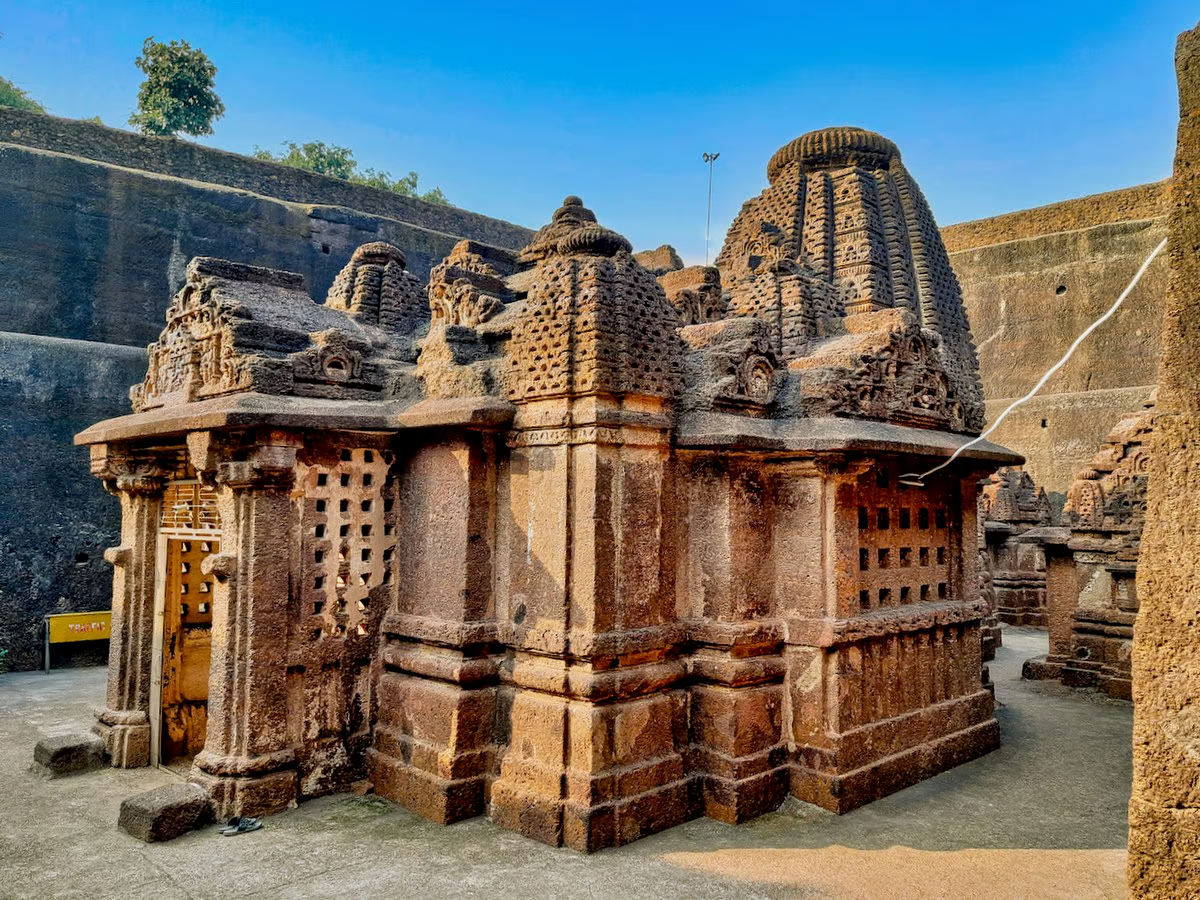

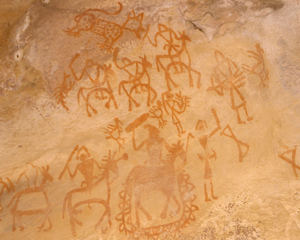
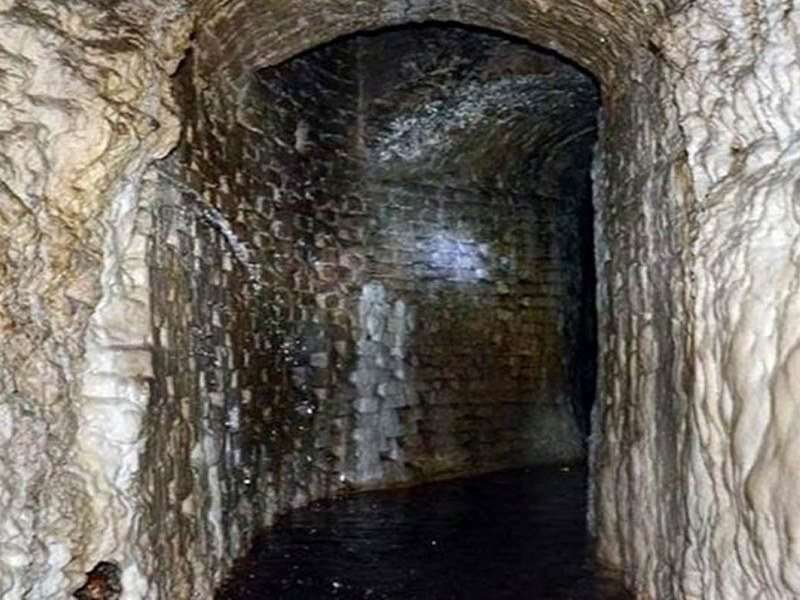
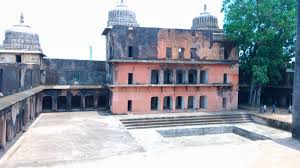


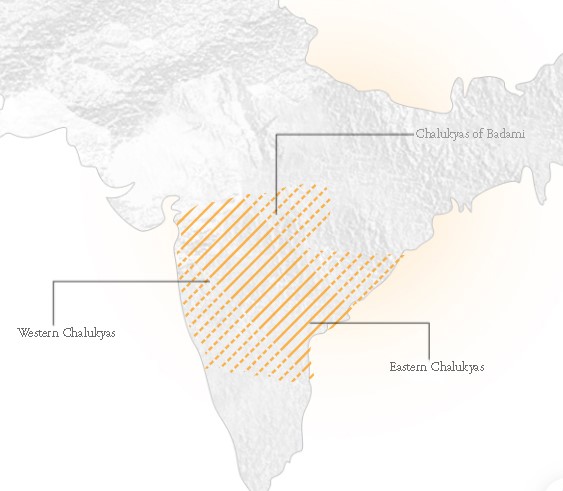
.png)

